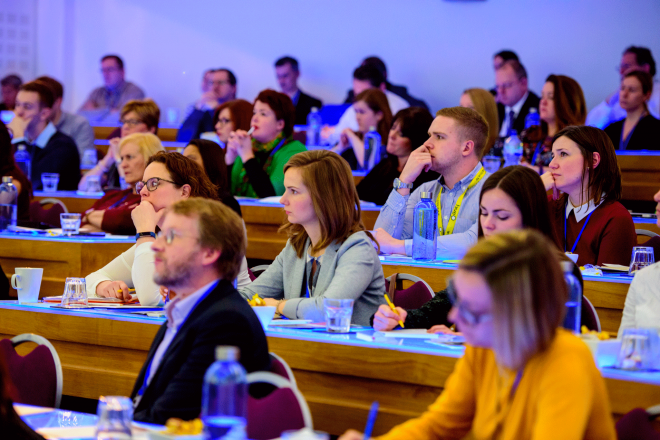
18th November 2024
Guest Post: Building Effective Teams by Changing Leadership Behavior

This guest blog post was written by Roy Fletcher, Director of Partner & Client Relations, Mindset.
Investing in leadership skills training in the classroom is not enough to guarantee that leaders will be effective or that their teams will excel. The most impactful development and application of leadership skills occur on the job, where leaders learn through direct experience in dynamic, real-world settings.
The Effectiveness Challenge of Leadership Development
Organizations globally spend approximately $60 billion¹ on leadership development and learning programs, aiming to enhance team effectiveness and improve business performance. The leadership development industry overall, however, hasn’t effectively responded to the challenge, with organizations still frustrated with the results. According to a recent article in the Harvard Business Review², more than 50% of senior leaders interviewed believe that their talent development efforts don’t adequately build critical skills and organizational capabilities. It seems leaders in general face significant challenges in translating theoretical concepts and classroom learning into practical, sustainable behaviors in the work environment. The benefits of training are often short-lived, leading to only temporary improvements in leadership performance and team effectiveness.
Changing Leadership Behaviors by applying Classroom Learning on the Job
To build the critical leadership skills that will create a lasting impact on team effectiveness, leaders should be equipped and empowered with the tools and the understanding necessary to apply the skills that they are been taught in practice, in their actual work environments. But equally important, to ensure long-term improvements, behavior-change should be reinforced to such an extent that it becomes a habit – which will be the holy grail of sustainable team effectiveness improvement.
Before leaders can be guided through the process of applying classroom learning on the job, the foundational building blocks should first be put in place:
- Knowledge: Provide leaders with a robust theoretical foundation on essential leadership principles to set the groundwork for effective team management.
- Skills: Support leadership growth through developmental assessments, such as 360-degree feedback, and provide leaders with coaching sessions that tailor development programs to their unique challenges and strengths.
- Insights: Offer team-level feedback and insights on the drivers and barriers to team effectiveness. These insights create awareness of areas for improvement, enabling leaders to understand team dynamics on a deeper level.
However, these foundational building blocks alone will not be sufficient. The true challenge lies in transforming the acquired knowledge, skills, and insights into practical, habitual behaviors that drive team success. This transformation can be achieved through a combination of approaches and techniques:
- On-the-Job Application: Encourage leaders to actively practice leadership techniques in their work environment. By applying these skills in day-to-day tasks, leaders will be more likely to embed them into their regular behavior.
- Personalized Leadership Journeys: Utilize hyper-personalized, self-driven leadership journeys that address the multifaceted nature of leadership. These tailored journeys will guide leaders through various on-the-job scenarios and challenges, enabling them to tackle different aspects of their development in a practical, individualized way.
- Guided Mastery in Real-World Scenarios: Provide leaders with opportunities to apply theoretical knowledge on a structured and progressively challenging basis within their teams. This hands-on approach will enable leaders to translate leadership concepts into effective actions, entrenching learning through practice and experience.
- Continuous Self-Assessment and Feedback: Promote regular self-assessments, complemented by feedback from peers, managers, and team members. Such a continuous feedback loop will foster self-awareness and helps leaders identify areas for improvement, reinforcing behavioral changes over time.
- Coaching and Mentorship: Connect leaders with coaches and mentors who provide expert guidance and practical advice. These personalized relationships will offer valuable support, and will help leaders navigate challenges and make progress toward their development goals.
- Digital Tools for Habit Reinforcement: Provide digital aids and tools that assist in embedding healthy leadership practices. Such tools will provide leaders with real-time, data-driven insights and nudges that will encourage them to consistently demonstrate healthy behaviors.
- Gamification: Implement gamification techniques to encourage and embed leadership behaviors. By introducing game-like elements, such as rewards, competitions and progress tracking, leaders will be motivated to embrace and sustain new behaviors.
Entrench Healthy Leadership Habits to drive Team Effectiveness
Building effective teams starts with changing leadership behaviors. By embedding these practices into the workplace, and providing tools that enable leaders to practice and apply their skills in real-world scenarios, organizations can enable sustainable behavioral change. With a foundation of knowledge, reinforced by practical application, feedback, and digital support, leaders can transform their leadership behaviors into healthy habits that will drive lasting team effectiveness, and ultimately contribute to a more productive and positive work environment.
_____________________________
- Ayse Yemiscigil, Dana Born, Horace Ling, (2023). What Makes Leadership Development Programs Succeed? Harvard Business Review. Retrieved from https://hbr.org/2023/02/what-makes-leadership-development-programs-succeed.
- Mihnea Moldoveanu, Das Narayandas, (2019). The Future of Leadership Development. Havard Business Review. Retrieved from https://hbr.org/2019/03/the-future-of-leadership-development.






